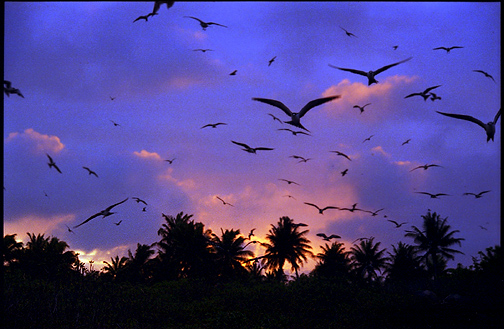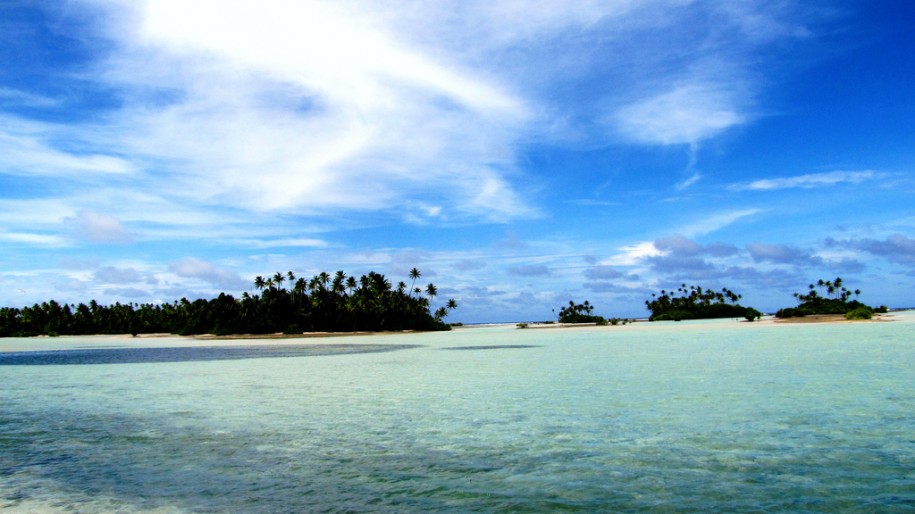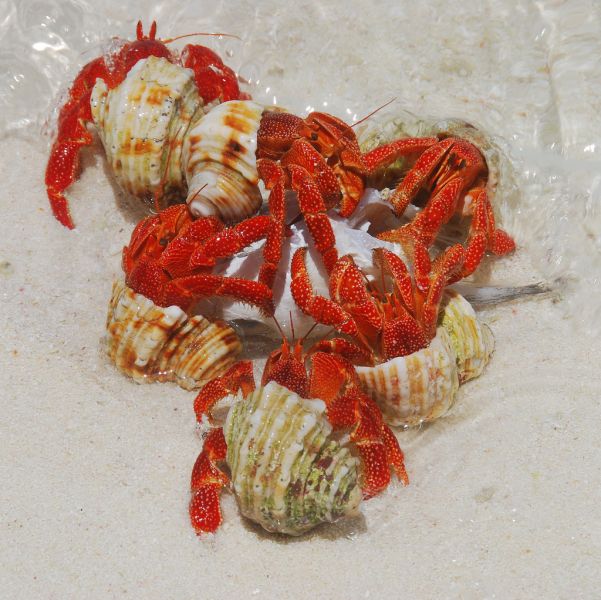T32AZ. KH6QJ is currently active again as T32AZ from Kiritimati Island, IOTA OC - 024, Eastern Kiribati.
He will operate on 160, 80, 40, 20, 15 and 10m, SSB.
Recent DX Spots T32AZ
QSL via home call.
Ads for direct QSL:
Kenneth D Taylor, PO BOX 4628, Honolulu, HI 96813, USA.
DXCC Country - Eastern Kiribati.
Kiritimati Island
An island that can easily have dozens of epithets with the prefix "the most". The largest atoll of coral origin. The largest colony of unique birds. The territory with the most controversial history. The most attractive yet unruly island in the Line Archipelago. If you want to celebrate the New Year before everyone else, go to Kiritimati.

Kiritimati is the largest coral atoll in the world
The territory of Kiritimati Island (second name Christmas Island) belongs to the state of Kiribati. Neighbors of the archipelago are the islands of Tabueran, Honolulu and Tahiti. The total land area is only 60 square kilometers larger than the surrounding lagoons and is 388 m². It is the world's largest atoll of coral origin, conventionally divided into five enclosed areas.
Of particular interest is the structure of the island. The coral reef goes 120 meters deep into the ocean, resting on powerful volcanic rocks. The tidal lagoon of Kiritimati is a record 16000 hectares, joining the ocean in the northwest. The atoll's water area is also made up of 16800 hectares of water from hundreds of smaller lagoons located on the eastern part of the coastline. This endless number of lagoons and patches is home to hundreds of tiny islets that go completely underwater at high tide.
Despite this abundance of salt water, there are problems with the quantity of drinking water and its quality on Christmas Island itself. Most fresh water sources are not deep - up to 2 meters, which does not allow to completely get rid of ground salts. Therefore, drinking water in this area is slightly salty in taste.
The equatorial climate of Kiritimati with moderately hot summers, sufficient rainfall and eastern refreshing monsoon winds creates a favorable ground for the development of tourism business.

History of the island: through the thorns to the stars
The island was first discovered during one of his expeditions by navigator James Cook. It was in the distant 1777. It was the discoverer who named the found territory in honor of the approaching holiday - Christmas.
Despite all the ostentatious luxury, abundance of greenery and multiple representatives of animal life, the archipelago at the time of discovery was uninhabited. And only many years later, in 1842, the fertile territory was interested in the researcher John Scott, who gathered an expedition and went to explore the island for minerals, precious metals, unique flora and fauna. A little later his "feat" was repeated by John Stetson, who discovered on the island a unique layer of guano - fertilizer, the cost of which is equal to the price of gold. In the future, the official right to mine this useful substance was granted to American and Australian companies, until the island was annexed by Britain in 1888.
The times when the island was ruled by the British government were not the best for the small local population and nature. The calculating British tried to maximize the use of the conquered territories for various scientific experiments. Thus, in 1937, the first British radio station appeared here, and in the 50-60s a military base was built to test nuclear weapons and hydrogen bombs.
It is logical that all the changes in the natural infrastructure of the atoll could not but affect the health of people, the number of animals and birds, and the quality of coastal waters. It took a long time to at least partially restore the natural balance.

Christmas Island today is an exotic resort with a special aura
The arrival of Europeans on Kiritimati has played a cruel joke on the flora and fauna of the island. Thus, the USA, during its rule over the island, decided to make it one continuous plantation of coconut palms. In different periods mass plantations of imported coconut seedlings were carried out here. But due to unfavorable climatic conditions and high salt content in the soil, most of them did not take root.
Pearl mining is another branch of the state's economy. According to some statistics, more than 50 tons of this precious stone have been exported from the island for all time.
Modern Kiritimati is developing in two directions: tourism and copra production. Only the state plantation of this plant is more than 5 thousand hectares, and this is without taking into account the multiple private lands.
Also some companies of the island are engaged in catching and selling chilled fish of rare varieties. There were even attempts to create on the territory of the archipelago a special water area for breeding of unique crustaceans. But this type of fishing did not develop beyond the project.

